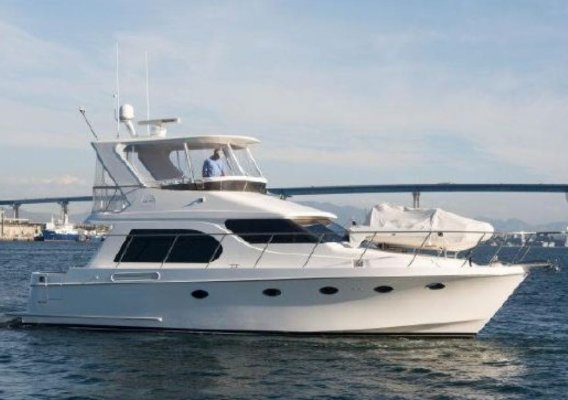jbinbi
Senior Member
Coming from 55 years as a sailor, and looking at what type of powerboat to purchase. One thing I am looking at is doing the great loop, as well as other coastal cruising in FL and North east.
Am looking at a powercat or swift trawler only because I would like to get past the 50 mi a day limit I had on a sailboat. Now maybe 50 mi on a powerboat has you much less tired at your destination than a sailboat, so you can do more mi per day? But 7kts at 8 hours is 50mi.
On the great loop, I am not sure how fast you can go. The parts of the ICW in S FL I know don't allow for fast speed / large wake, I don't know about other parts of the loop, so not sure that speed makes a difference for the loop.
But for other coastal cruising, I would like to be able to do 100 mi days, 12kts does this. 15kts gets me 150 mi days. Bene swift trawler and powercat gets me this. 40' is around top of my comfort zone. I need beds that are walk off because of bad knees, also want separate shower. Don't like that power cats have no side door to the side deck to single hand dock. But love their space. And I come from a sailing cat, which was the best boat decision I had since my wife gets seasick, and the motion was much better than monohull.
Is this making sense? I have looked at lots of sites on the loop, but haven't found one that is really a day to day blog explaining how far, how fast, etc.
Hope some with way more experience can chime in. Thanks.
Am looking at a powercat or swift trawler only because I would like to get past the 50 mi a day limit I had on a sailboat. Now maybe 50 mi on a powerboat has you much less tired at your destination than a sailboat, so you can do more mi per day? But 7kts at 8 hours is 50mi.
On the great loop, I am not sure how fast you can go. The parts of the ICW in S FL I know don't allow for fast speed / large wake, I don't know about other parts of the loop, so not sure that speed makes a difference for the loop.
But for other coastal cruising, I would like to be able to do 100 mi days, 12kts does this. 15kts gets me 150 mi days. Bene swift trawler and powercat gets me this. 40' is around top of my comfort zone. I need beds that are walk off because of bad knees, also want separate shower. Don't like that power cats have no side door to the side deck to single hand dock. But love their space. And I come from a sailing cat, which was the best boat decision I had since my wife gets seasick, and the motion was much better than monohull.
Is this making sense? I have looked at lots of sites on the loop, but haven't found one that is really a day to day blog explaining how far, how fast, etc.
Hope some with way more experience can chime in. Thanks.


